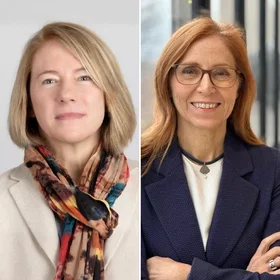For nearly a decade, Lecturer Don Waisanen has instructed Strategic Communication Master’s students at Columbia University on how to bring storytelling to the center of their communications work. With a background in broadcast journalism, speechwriting, and improvisational comedy, Waisanen has also authored several books on how communication works to promote or hinder the force of citizens’ voices.
We caught up with Waisanen to learn what brought him to teaching and why the skill of compelling storytelling is more important than ever.
What drove you to teach?
My prior life working in broadcast journalism, in politics and business, and even the performing arts led me to a career in teaching. Across these different experiences and sectors, I began observing that the type and quality of communication that people use either elevates or hinders every public policy, business decision, or human endeavor.
As I discuss in a new book coming out early next year, Improv for Democracy: How to Bridge Differences and Develop the Communication and Leadership Skills Our World Needs, “Our lives mostly hang on the quality of what we say and how we interact with one another. Day by day and moment to moment, we spend our lives affecting one another for better or worse in every encounter. Sometimes strong friendships dissolve from a lack of conversations. Different communication styles or statements interpreted in different ways can create unproductive tensions in the workplace where there were none. These stakes are only raised in our neighborhoods, communities, and nations, with racial and ethnic divisions arising from the ways that people talk about one another. Leaders have collapsed economies with their words, while politicians have traded insults that have set in motion or brought us to the brink of world wars.”
With these kinds of ideas long circulating in my mind, I became insatiably driven to understand how communication works and what it does in our lives. I see teaching communication as a mission to understand, collectively work through, and set in motion 21st-century forms of communication that can best move our planet into the future. I started that journey over two decades ago and have never, ever been bored—there’s always more to learn and apply with this electrifying and consequential subject!
Too many organizations and marketing, advertising, and PR professionals fall into the trap of calling everything a 'story.' One piece of feedback I receive from students every semester is that they learned about the critical difference between what is and isn’t a story."
Why is your class critical in today’s environment?
I teach a course called The Strategic Storyteller. On the first day of class, I underscore to my students that they could build an entire career out of what they’ll learn—the applications of great storytelling apply to everything from media promotions to book writing. The course shows students that storytelling is both at the center of everything that they have done and will do in their lives, and is one of the most important subjects for any professional in strategic communication to master.
Many students coming into the class think storytelling is important and will be a nice “add-on” to their existing skills, only to find out that a narrative perspective and techniques should be at the core of their work, from making sure that their organization has a central story to using stories for measurable impacts in sales, fundraising, or employee engagement. Particularly as strategic communication has moved from a mass media, broadcast-era mentality to one more grounded in interactive stories and experiences diffused through digital media, it is more critical than ever to understand both how storytelling works and how to apply it in our work.
What is one key take away from your course?
Too many organizations and marketing, advertising, and PR professionals fall into the trap of calling everything a “story.” One piece of feedback I receive from students every semester is that they learned about the critical difference between what is and isn’t a story. For instance, my students learn that if they are only providing positive information about their organization or its stakeholders, they are probably not telling a story. Can you imagine if Harry Potter was about a young boy with latent magical abilities who became a brilliant wizard without facing any dark forces? Or if Katniss from The Hunger Games had shown up in District 1 and the leadership had reacted with, “Sure, we’ll give you everything you want.” It would now be called The Satisfaction Games. In both cases, there would be no stories. Similarly, it’s critical for strategic communicators to write about the hardships, barriers, or rising obstacles that their heroes have to overcome—that’s what keeps audiences hooked beyond the lead.
After taking your course, what can your students apply to their daily lives right away?
After the class, students walk away with a checklist of storytelling criteria to apply in almost all their future communication work. In writing about a local business, they’ll be asking themselves if potential customers can see themselves in the organization’s stories. In putting together a presentation for a nonprofit gala, they’ll check to see if they have humanized a central character/client their organization serves before diving into that person’s story and problems. In promoting a government healthcare ad, they’ll be looking for the most critical moment in which a protagonist’s normal world was turned upside down by an illness, leading to a core “want” that will drive the story’s actions and the audience’s interest. These are just some of the ways this class becomes practical for strategic communicators moving forward.
What is your favorite thing about teaching?
Teaching offers students expanded choices that lead to growth. As Jeff Katzman and Dan O’Connor highlight, we are all born into this world “scripted.” We come to experience life through the lens of our different family situations, communities, and social worlds that all play important parts in who we become. But ultimately, human growth can only occur when we learn new concepts, operate from different standpoints, and keep pushing beyond the boundaries of our intellectual, affective, and behavioral tendencies. Despite all the constraints we all face in our everyday lives, that’s my definition of freedom. Communication education offers an opportunity to “unscript” and “rescript” our lives—providing us with a greater understanding of ourselves and others while raising the bar for future practice.
Learn more about the M.S. in Strategic Communication program at Columbia University.


